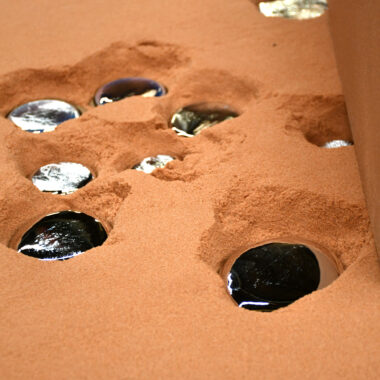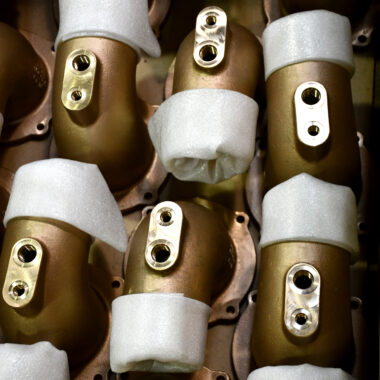Crafting Excellence: Exactly How to Accomplish High-Quality Aluminum Castings Each Time
In the world of aluminum casting, the search of perfection is a constant trip that requires a precise strategy and a keen understanding of the intricacies included. Attaining consistent top notch aluminum castings demands a detailed understanding of the processes, from choosing the ideal alloy to performing exact mold and mildew layouts and meticulously controlling casting specifications.
Comprehending Aluminum Casting Procedures
Aluminum casting procedures, essential in the manufacturing market, include the elaborate improvement of liquified light weight aluminum right into strong kinds via a collection of meticulously regulated actions. Recognizing these procedures is paramount to achieving top quality aluminum castings regularly - about aluminum casting. The primary methods utilized in aluminum casting are pass away casting, sand casting, and investment spreading

Each of these procedures has its advantages and is chosen based on factors like complexity, volume, and desired finish of the aluminum spreading. about aluminum casting. Understanding the complexities of these techniques is vital for suppliers aiming to produce top quality aluminum spreadings continually
Choosing the Right Light Weight Aluminum Alloy
Selecting the proper aluminum alloy is a vital choice in the manufacturing of high-quality aluminum spreadings. When picking an aluminum alloy for spreading, it is necessary to consider the particular needs of the application to guarantee optimum performance.
Among one of the most typically made use of aluminum alloys for casting is A356. This alloy uses excellent castability, high stamina, and excellent deterioration resistance, making it appropriate for a vast range of applications. 6061 light weight aluminum alloy is preferred for its premium weldability and good mechanical homes. For applications calling for high toughness, 7075 aluminum alloy is a popular option because of its remarkable strength-to-weight ratio.
In addition to mechanical residential properties, factors to consider such as expense, schedule, and post-casting processes ought to additionally influence the choice of the appropriate aluminum alloy. By meticulously evaluating these variables, producers can guarantee the manufacturing of top quality light weight aluminum castings that meet the desired requirements.
Applying Correct Mold And Mildew Style
Establishing a reliable mold and mildew design is critical for making sure the successful manufacturing of high-grade aluminum castings. Proper mold and mildew design plays a substantial duty in accomplishing the desired characteristics of the last product. To execute an effective mold design, variables such as product flow, cooling down rates, and component geometry need to be thoroughly considered.
One trick element of mold design is making certain appropriate filling and solidification of the light weight aluminum within the mold dental caries. This entails creating jogger and gating systems that help with smooth metal circulation and stop problems such as air entrapment or incomplete dental filling. Additionally, including cooling networks into the mold and mildew style aids manage solidification prices and decrease the threat of porosity or shrinking defects.

Controlling Casting Parameters

Making Certain Post-Casting High Quality Checks
To maintain the excellent quality of light weight aluminum castings, thorough post-casting high quality checks are vital. After the casting procedure is completed, it is crucial to make certain that the end products fulfill the wanted requirements and specs. Among the main top quality checks entails checking the surface coating of the castings to recognize any type of defects such as porosity, cracks, or surface abnormalities. This aesthetic evaluation is commonly supplemented by non-destructive testing methods like ultrasonic testing or color penetrant inspection to discover inner flaws that may endanger the honesty of the spreading.
Dimensional accuracy is another vital element that needs to be validated throughout post-casting top quality checks. Dimensions of vital measurements and resistances need to be required to validate that the spreadings adapt the required specifications. Furthermore, mechanical buildings such as solidity, tensile strength, why not check here and influence resistance may require to be evaluated through material testing to make sure that the spreadings have the necessary stamina and durability for their intended application.
Final Thought
To conclude, accomplishing top notch light weight aluminum spreadings needs a thorough understanding of the spreading procedures, choosing the suitable alloy, designing mold and mildews successfully, managing casting specifications carefully, and conducting post-casting top quality checks faithfully. By adhering to these actions, producers can consistently generate aluminum castings that fulfill the greatest standards of top quality and efficiency.
Accomplishing consistent high-quality light weight aluminum castings requires a detailed grasp of the procedures, from selecting the proper alloy to performing specific mold layouts and carefully regulating casting criteria. The primary approaches made use of in aluminum casting are pass away casting, sand spreading, and financial investment casting.
Investment casting, also recognized as precision spreading, involves developing wax patterns that are coated in ceramic to develop mold and mildews.Selecting the ideal aluminum alloy is a critical decision in the manufacturing of high-quality aluminum spreadings.Ensuring accurate control over spreading parameters is necessary for maintaining consistency and high quality in light weight aluminum spreading production.
Comments on “Accuracy in Practice: The Art About Aluminum Casting”